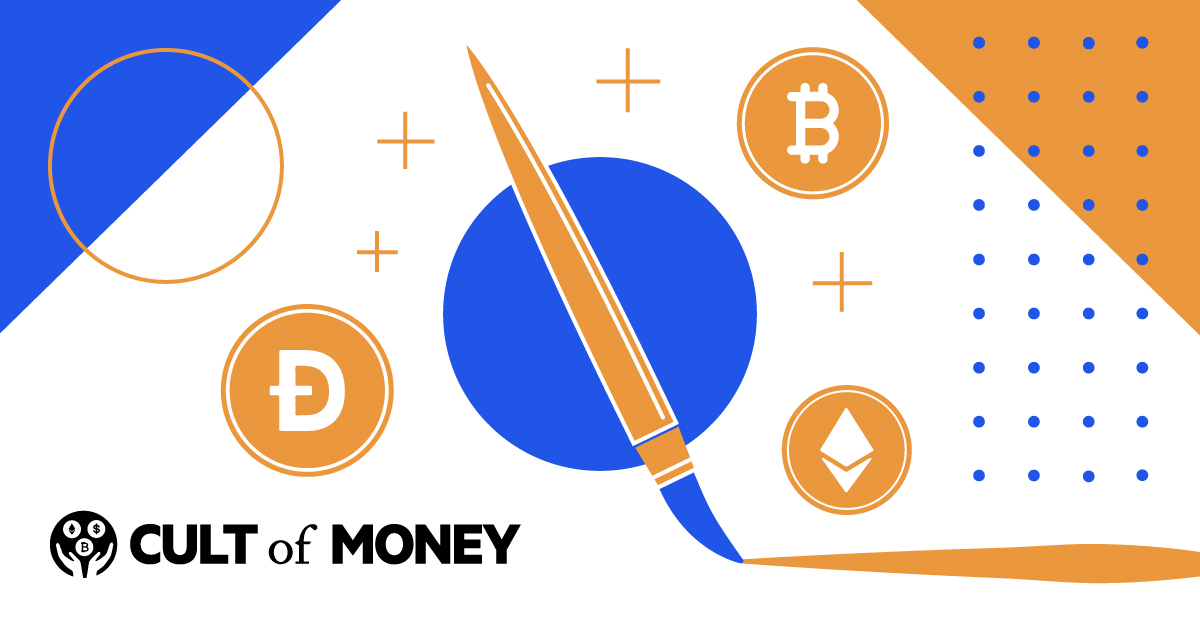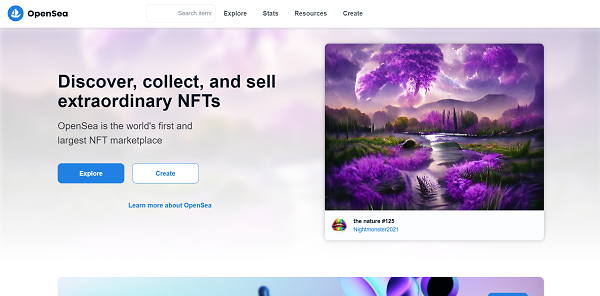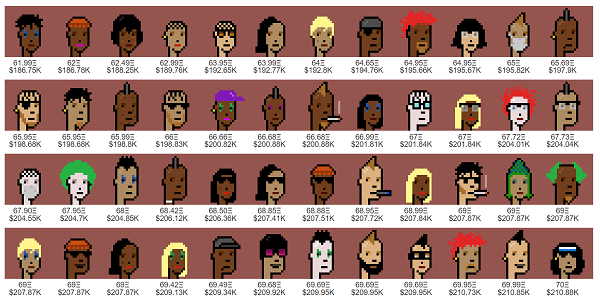
Non-fungible tokens (NFTs) are being hailed as a way to validate ownership of digital assets — as well as a way for creators to own and profit from their work.
And for digital creators, NFTs present a new opportunity to create and sell digital assets to collectors and enthusiasts.
But how do you actually create and sell NFTs? And how can digital creators take advantage of this new trend and make money with their NFT artwork?
This step-by-step guide is covering everything you need to know to get your first sale.
Steps To Create & Sell An NFT
The steps to creating an NFT — whether you do so with a static image file, gif, video or audio clip — are pretty straightfoward:
- Choose an NFT marketplace
- Get a compatible NFT wallet
- Mint your NFT
- List the NFT for sale
While the steps are simple, successfully selling an NFT isn’t always easy. Let’s take a closer look at what it takes with each of these steps.
Choose An NFT Marketplace
If you have an NFT idea, the first step in creating one is choosing an NFT marketplace.
You can create NFTs without using a third-party marketplace. However, this requires more technical knowledge. So for most newbies, using an established and reputable platform is the way to get started.
Just note that various NFT platforms are compatible with different blockchains. When choosing a platform, make sure it supports the blockchain you plan to use.
Here are some of the more popular NFT marketpalces that let you mint NFTs on different blockchains.
Rarible: Ethereum, Flow, Tezos
Rarible is community-owned, but you don’t need to use RARI token to participate. You can choose which blockchain you’re interested in, based on what’s available. Ethereum and Tezos are the main chains available on Rarible, but you can also use Flow.
Rarible charges fees depending on the chain you use. There is a free minting option as well. In general, you’re likely to pay the highest gas fees when you use Ethereum versus the other blockchains.
OpenSea: Ethereum, Polygon
OpenSea is the largest NFT marketplace is the world, so it's a natural choice for beginners looking to get into the space.
And with OpenSea, you can mint Ethereum and Polygon-based NFTs. You need to consider gas fees with OpenSea, although it’s also possible to use a feature that allows you post your NFT to your profile for free while the buyer pays gas fees.
On top of that, there is a creator fee of 2.5% of your sale, so keep that in mind when setting your NFT prices.
Holaplex: Solana
Holaplex is one of the most popular ways to mint and sell Solana NFTs.
You have to connect a Solana wallet to your Holaplex account to create a store. But once you do, you can mint Solana NFTs and sell them to other people on the marketplace.
Minting fees fluctuate and are based on Solana network congestion. But in general, the cost is usually lower than the gas fees on the Ethereum network.
Objkt: Tezos
In addition to being a secondary marketplace, Objkt also lets you mint NFTs and store your collection.
The fee for successful sales is 2.5%. For those interested in Tezos as a blockchain, this can be a decent choice, although you can also use Rarible to mint NFTs on the Tezos chain.
Get A Compatible Wallet
Once you decide where you want to mint and host your NFTs, you need to make sure you have a compatible wallet.
OpenSea is one of the easiest marketplaces to use because it’s compatible with just about any wallet that's compatible with Ethereum. For example, you can connect both Trust Wallet and Coinbase Wallet to OpenSea.

For other NFT marketplaces, you need to make sure the wallet you have is compatible with your choice of blockchain. For example, if you want to use Objkt, you need a Tezos-compatible wallet like Spire, Kukai Wallet, AirGap Wallet or Umami.
Similarly, to use Holaplex, Solana wallets like Phantom or Solflare are your best bet.
Before you get started, make sure you understand which wallets are compatible with the blockchain you want to use. Also pick a wallet that's compatible with the NFT marketplace you're using.
Mint Your NFT
The next step in selling NFTs is to actually mint your NFT so you have something to sell.
This is where using an NFT marketplace is advantageous for beginners. All you have to do is upload your file and pay any minting fees with funds from your connected wallet.
Most platforms can handle a variety of file types, including image, video and audio files. This means all you have to do is upload the digital artwork you've created to the marketplace to start creating your first NFT.
The video below from YouTube channel Kapwing walks through the process of creating an NFT from scratch on Rarible. This includes the steps from actually creating the NFT artwork to filling out the listing and pricing information on the marketplace.
OpenSea also makes it relatively easy to mint an NFT and list it. Of course, you need some basic design skills if you're selling digital artwork you're creating.
But many popular NFTs aren't more than some basic Photoshop work. And massive collections like VeeFriends are just doodles, so artistic talent isn't always a limiting factor for selling NFTs.
List The NFT For Sale
The final step in selling NFTs is to set your price and actually list the NFT for sale.
Some platforms also allow bidding, so you can set a minimum amount you’re willing to accept. Just like almost anything else, whether you end up selling your NFT depends on whether someone wants to buy it at the price it’s listed.
Certain NFT marketplaces also let you run sales to entice buyers. And you can also try promoting your NFT or a collection of them on social media to find buyers.
Tips For Selling NFTs
Like almost anything else for sale on the internet, you need to be able to market your NFT if you want to find success.
Thankfully, there are several tips creators can keep in mind to increase their odds of making a sale.
Connect With Other Crypto Enthusiasts
One of the simplest ways to market your NFTs is to connect with industry enthusiasts. After all, if you're selling NFTs, you want to make sure you're using the right marketplaces and are up-to-date with trends so you can appeal to more customers.
Two of the biggest places to connect with fellow crypto fans are:
- Twitter: There’s a strong community of crypto users on Twitter. True fans even use an NFT as a profile picture on Twitter, and there are many NFT collectors on the platform who are interested in buying new NFTs from fresh collections.
- Discord: Many crypto projects and companies interact with their communities on Discord. So, set up your Discord account and get involved to meet fellow NFT creators and collectors you can potentially sell to.
Also make sure you know how to use the platforms you're marketing on. For example, if you’re using Twitter, learn how to use appropriate hashtags to make it easier for prospective buyers to find you.
You should also follow other NFT creators on this platform to study what successful artists are doing to separate themselves from the crowd.
Have A Project Concept
It can also help your NFT sales if you have a concept for a collection of NFTs.
For example, some of the most successful NFT projects follow a central theme. Take Bored Apes or CryptoPunks, both of which have immediately recognizable designs.

Some CryptoPunks available for sale.
Think about what concept you want to use, and how you can create different NFTs around that concept. Then, group your NFTs into collections. If you can build a following, you can generate buzz when you drop a new collection later.
Collaborate With Other NFT Creators & Crypto Enthusiasts
Another strategy to sell NFTs is to collaborate with other creators.
For example, you can create a joint collection with an artist in a similar niche as you and split the profits. This helps you leverage one another's audiences and also helps you create more NFTs for the collection.
Offer Bonuses To Collectors
Some creators increase the hype around their NFT projects by offering special perks to collectors.
This might be a hidden easter egg or access to exclusive content you offer elsewhere. Perhaps owning an NFT you create allows the purchaser a “key” to participating in your membership-only website or some other perk.
NFTs are essentially smart contracts, so it’s important to know that if you offer perks, you might need another layer of technical knowledge for your creations to function in multiple ways. But if you’re serious about creating a long-term community, though, this can be a way to improve your chances of success.
Frequently Asked Questions
Is Selling An NFT Taxable?
Creating NFTs doesn't mean you have to pay taxes. But if you sell an NFT, that creates a taxable event. This means you need to declare the income and will be taxed on the profits at your ordinary tax rate.
Crypto and NFT taxes can be complicated, but this is why it's important to accurately track your income and expenses for digital assets.
This is also where crypto and NFT tax software and accurate bookkeeping throughout the year are truly handy.
Can You Sell An NFT You Just Bought?
The tactic of buying and reselling NFTs is known as NFT flipping. Flipping NFTs is legal and is similar to buying and selling stocks or other assets for a profit.
How Much Does It Cost To Sell An NFT?
Different NFT marketplaces have different seller fees. For example, OpenSea charges 2.5% for NFT sales. Rarible, another popular NFT marketplace, also charges 2.5% to sellers.
Some NFT marketplaces also charge NFT minting fees. It's a good idea to factor in these potential fees when setting your prices.
The Bottom Line
If you’re a beginner looking to mint and sell NFTs quickly and easily, using a marketplace like OpenSea or Rarible makes the most sense. These platforms are compatible with more than one blockchain and are reputable. Additionally, they offer a variety of options that can reduce your cost to list NFTs, like a lazy mint process that requires the buyer to pay gas fees.
On the other hand, if you’re interested in a specific blockchain project like Solana or Tezos, it make senses to mint on specific marketplaces for those blockchains. This helps you approach a more niche community that are more likely to be interested in your NFT creations.
Carefully consider your options and research several NFT marketplaces to find the right fit. Once you’re ready, it can take just a few hours to mint your first NFT and list it for sale.
Just remember: minting NFTs isn't the hard part. Rather, it's building up a loyal following and marketing your NFT collection. But if you think of a trendy idea and market your collection properly, it's possible to make money by creating and selling NFTs.

Miranda Marquit, MBA, has been covering personal finance, investing and business topics for more than 15 years, and covering crypto topics for more than 10 years. She has contributed to numerous outlets, including NPR, Marketwatch, U.S. News & World Report and HuffPost. She is an avid podcaster, co-hosting the podcast at Money Talks News. Miranda lives in Idaho, where she enjoys spending time with her son playing board games, travel and the outdoors.
